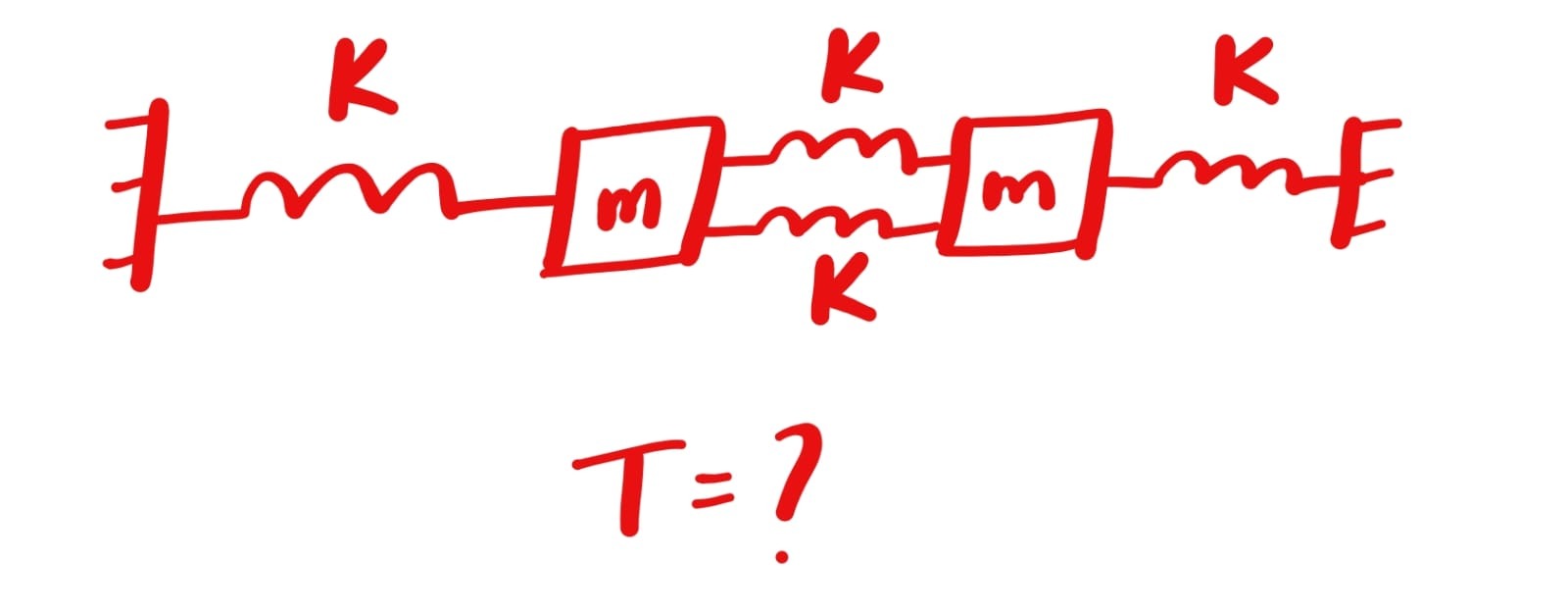Question
Question: T=?...
T=?

There are two normal modes:
- For masses oscillating in-phase: T = 2π√(m/k)
- For masses oscillating out-of-phase: T = 2π√(m/(5k))
Solution
We begin by writing the total potential energy for small displacements. Let x and y denote the displacements (from equilibrium) of the left and right masses, respectively. Then the potential energies are:
- Left wall spring: ½ k x²
- Right wall spring: ½ k y²
- Two identical springs connecting the masses, each stretched by (y – x): 2 × ½ k (y – x)² = k (y – x)²
Thus, the total potential energy is
U = ½ k x² + ½ k y² + k (y – x)².
Expanding, we have
U = ½ k x² + ½ k y² + k (x² – 2xy + y²) = (3/2)k x² + (3/2)k y² – 2kxy.
The kinetic energy is
T = ½ m (ẋ² + ẏ²).
Using Lagrange’s equations (or by writing the equations of motion), we obtain the coupled equations:
m x¨ = – (3k x – 2k y) m y¨ = – (3k y – 2k x).
Assuming solutions of the form x = A cos ωt, y = B cos ωt, we substitute to get
(3k – mω²)A – 2k B = 0, –2k A + (3k – mω²)B = 0.
Non‐trivial solutions require a zero determinant:
(3k – mω²)² – (2k)² = 0 ⟹ 3k – mω² = ± 2k.
Thus, we have two cases:
-
For 3k – mω² = 2k ⟹ mω² = k ⟹ ω₁ = √(k/m).
This is the in‐phase (symmetric) mode (since then A = B). -
For 3k – mω² = –2k ⟹ mω² = 5k ⟹ ω₂ = √(5k/m).
This is the out‐of‐phase (antisymmetric) mode (since A = –B).
Since the period T is related to ω by T = 2π/ω, the two modes have periods:
• Symmetric mode: T₁ = 2π√(m/k)
• Antisymmetric mode: T₂ = 2π√(m/(5k))
